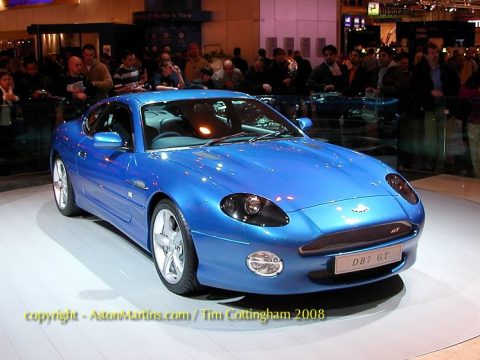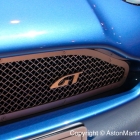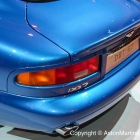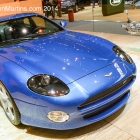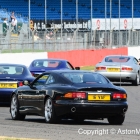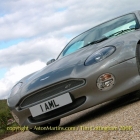The V12 was tweaked to deliver 435 bhp (an increase from 420 bhp of the DB7 Vantage) and also additional torque – up from 400 lb/ft to 410 lb/ft. The suspension was substantially modified and had thus stiffened the chassis by 20%. Special attention was paid to the aerodynamic balance for high speed stability with the adoption of additional sweeps for the undertray, wheel arch liner extensions and a revised boot lid spoiler which emphasises the new look. These additions helped to reduce lift by almost 50%. The car also featured twin bonnet vents not dissimilar to those seen on the V12 Vanquish for better air-flow management and to help dissipate heat. Also fitted was a distinctive wire mesh radiator grille and lower air intake.
Unique 5 spoke 18 inch alloy wheels were fitted with 245/35 front, 265/30 rear low profile Bridgestone tyres that provide optimum levels of performance and grip. Also the GT featured a free flowing exhaust with a by pass valve to give an exhaust note just like the V12 Vanquish. The revised quick-shift gear lever on the DB7 GT and racing twin-plate clutch enabled the driver to maximise use of the increase in power and torque and offers a faster gear change than the standard DB7 Vantage. Larger Brembo brake discs and upgraded pads also improved braking performance.
The final drive was changed from the 3.77 in the Vantage to 4.09 in the GT, so although top speed remained at 185 mph, acceleration wad much improved, reducing the time to 60 mph from 5.7 seconds, to a shade under 5 seconds.
The launch car, finished in Vertigo Blue, featured in all of the press photographs, the brochure and also on the AML stand during the 2002 British Motor Show at the Birmingham NEC. This important car was sold to an enthusiastic AM owner at the 2013 Bonham’s Auction held at Aston Martin Works.
Deliveries began in early 2003 when production was split 50:50 between the DB7 Vantage and the DB7 GT/DB7 GTA. It now appears that a total of 191 GT’s were built during 2003, with just 85 of these cars for the UK market and 64 for the US. Thus if you want a DB7 for long term ownership, this rare run-out model has to be the one to search out and keep.
Aston Martin Works Service and dealers worldwide are also able to upgrade the regular DB7 Vantage to resemble the GT with the optional wheels, bonnet vents and GT boot lid, although such cars are not to confused with real GT’s.



